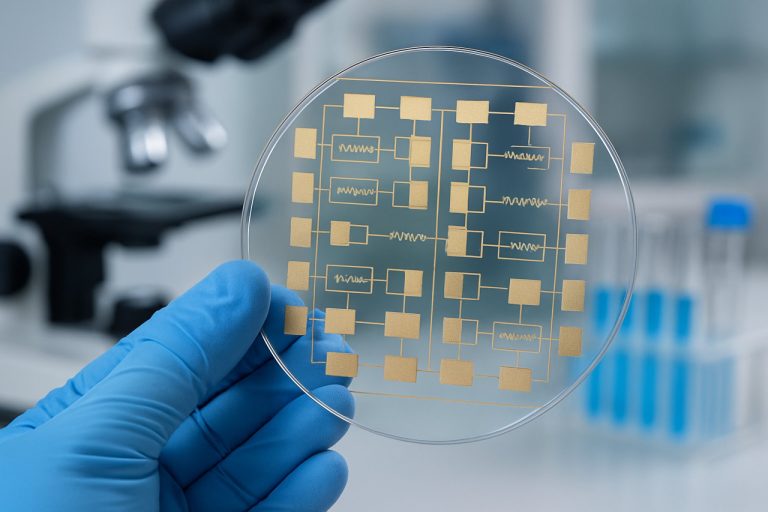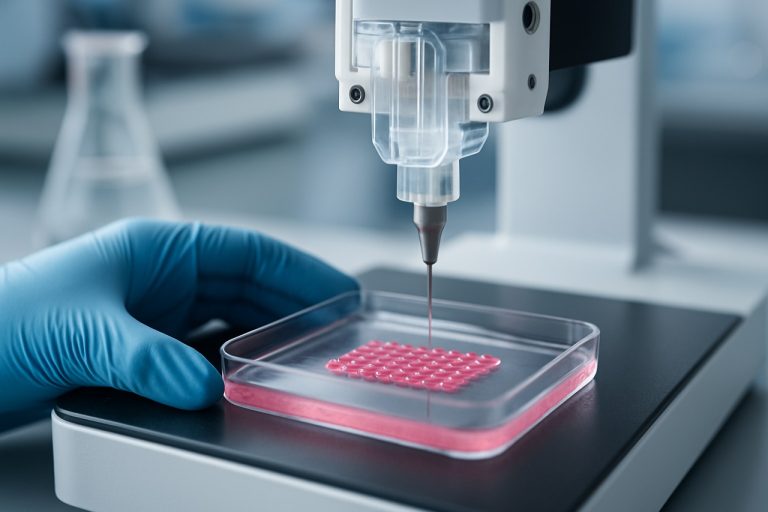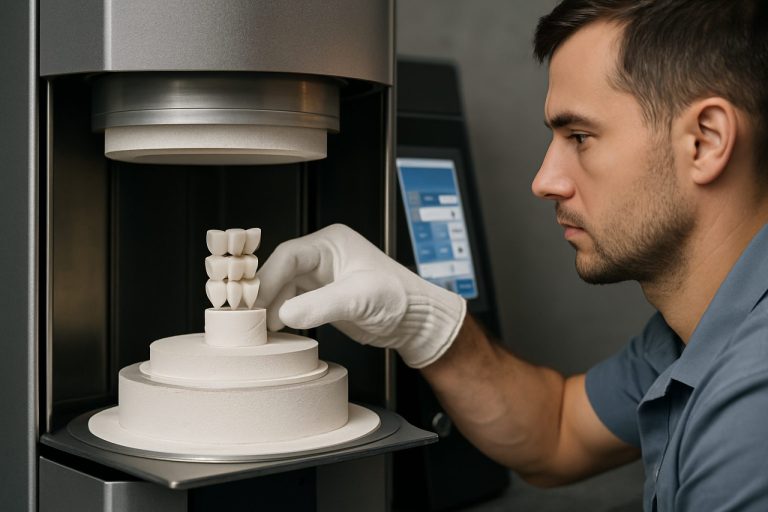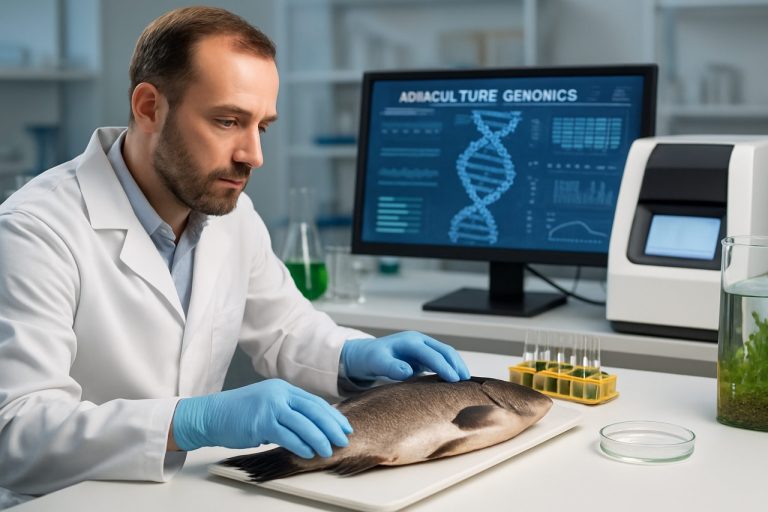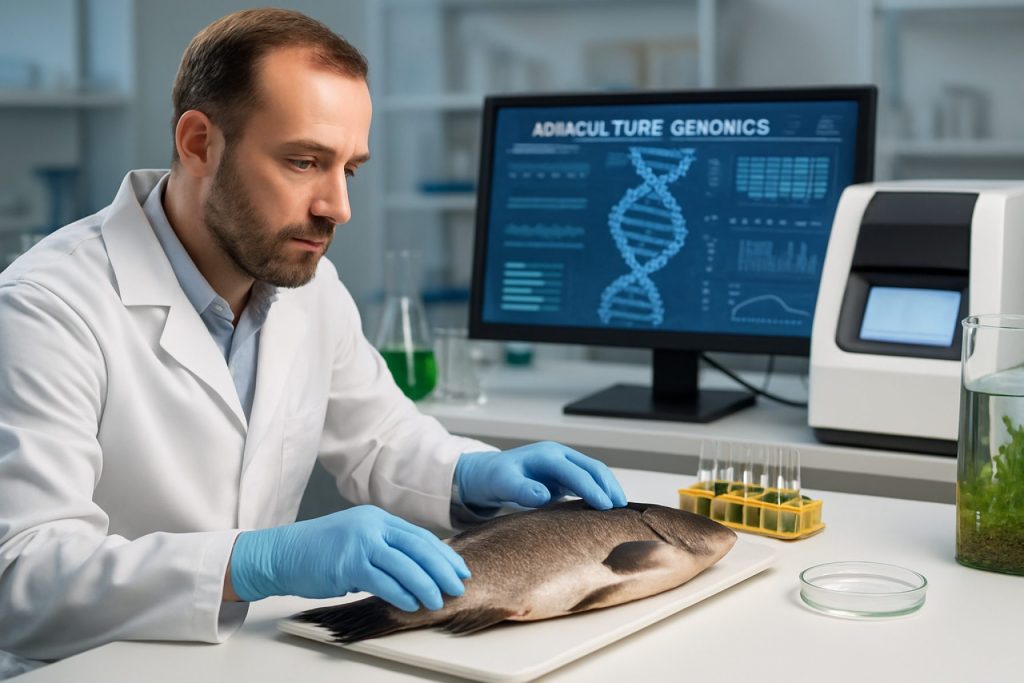
Unlocking the Future of Aquaculture: How Genomics Sequencing in 2025 is Transforming Seafood Sustainability, Productivity, and Disease Resistance. Explore the Breakthroughs Shaping the Next Generation of Aquatic Farming.
- Executive Summary: Key Trends and Market Outlook (2025–2030)
- Market Size, Growth Forecasts, and Regional Hotspots
- Technological Innovations in Genomics Sequencing for Aquaculture
- Major Players and Strategic Partnerships (e.g., illumina.com, thermofisher.com, worldfishing.net)
- Applications: Breeding, Disease Management, and Traceability
- Regulatory Landscape and Industry Standards (e.g., fao.org, worldaquaculturealliance.org)
- Challenges: Data Management, Costs, and Ethical Considerations
- Case Studies: Successful Genomics Integration in Leading Aquaculture Operations
- Investment Trends, Funding, and M&A Activity
- Future Outlook: Emerging Technologies and Long-Term Impact on Global Seafood Supply
- Sources & References
Executive Summary: Key Trends and Market Outlook (2025–2030)
The aquaculture genomics sequencing sector is poised for significant growth and transformation between 2025 and 2030, driven by technological advancements, increased demand for sustainable seafood, and the need for disease-resistant and high-yield aquatic species. The integration of next-generation sequencing (NGS) technologies is accelerating the pace of genetic discovery, enabling more precise breeding programs and improved stock management across global aquaculture operations.
Key industry players such as Illumina, a leader in NGS platforms, and Thermo Fisher Scientific, known for its comprehensive genomics solutions, are expanding their offerings tailored to aquaculture applications. These companies are collaborating with research institutes and commercial hatcheries to develop custom panels for genotyping, disease diagnostics, and trait selection. The adoption of high-throughput sequencing is expected to reduce costs and turnaround times, making genomic tools more accessible to small and medium-sized aquaculture enterprises.
In 2025, the focus is shifting from basic genome mapping to functional genomics, transcriptomics, and epigenomics, providing deeper insights into gene expression and environmental adaptation. This is particularly relevant for major farmed species such as Atlantic salmon, tilapia, shrimp, and carp. Initiatives led by organizations like WorldFish are leveraging genomics to enhance breeding programs in developing regions, aiming to improve food security and resilience to climate change.
Regulatory bodies and industry groups are also playing a pivotal role. The Food and Agriculture Organization of the United Nations (FAO) continues to promote the responsible use of genomics in aquaculture, emphasizing biosecurity, traceability, and the ethical management of genetic resources. Meanwhile, the GLOBALG.A.P. certification is increasingly incorporating genomic traceability standards, reflecting market demand for transparency and sustainability.
Looking ahead to 2030, the market outlook is robust. The convergence of artificial intelligence with genomics data is expected to further optimize selective breeding and disease prediction models. As sequencing costs continue to decline and bioinformatics capabilities expand, the adoption of genomics in aquaculture is projected to become standard practice, supporting the sector’s growth and its contribution to global food systems.
Market Size, Growth Forecasts, and Regional Hotspots
The global market for aquaculture genomics sequencing is experiencing robust growth in 2025, driven by the increasing demand for sustainable seafood, disease-resistant broodstock, and improved aquaculture productivity. The integration of next-generation sequencing (NGS) technologies into aquaculture breeding and health management is accelerating, with key players investing in advanced platforms and bioinformatics solutions. The market size is estimated to be in the high hundreds of millions USD, with projections indicating a compound annual growth rate (CAGR) exceeding 10% through the next several years, as genomics becomes central to precision aquaculture.
North America and Europe remain significant markets, propelled by established aquaculture industries and strong research infrastructure. In the United States, the adoption of genomics in salmon, tilapia, and shrimp farming is supported by collaborations between industry and academic institutions. Companies such as Illumina and Thermo Fisher Scientific are prominent suppliers of sequencing platforms and reagents, with their technologies widely used in both research and commercial breeding programs. These firms continue to expand their aquaculture-focused offerings, including targeted panels for disease resistance and growth traits.
Asia-Pacific is emerging as the fastest-growing regional hotspot, accounting for the majority of global aquaculture production and a rapidly increasing share of genomics sequencing activity. China, India, Vietnam, and Indonesia are investing in genomics to address challenges such as disease outbreaks and to enhance the genetic quality of high-value species. Regional genomics service providers and research institutes are partnering with global technology leaders to localize sequencing workflows and bioinformatics pipelines. For example, BGI, headquartered in China, is expanding its aquaculture genomics services, leveraging its high-throughput sequencing platforms and expertise in large-scale genomic data analysis.
Looking ahead, the market is expected to benefit from decreasing sequencing costs, improved reference genomes for key aquaculture species, and the integration of artificial intelligence in genomic selection. The European Union’s continued investment in sustainable aquaculture and the Asia-Pacific region’s focus on food security are likely to drive further adoption. Additionally, the expansion of cloud-based bioinformatics solutions by companies such as Illumina and Thermo Fisher Scientific is making genomics more accessible to small and medium-sized producers worldwide.
- North America and Europe: Mature markets with strong R&D and commercial adoption.
- Asia-Pacific: Fastest growth, driven by production scale and government initiatives.
- Key players: Illumina, Thermo Fisher Scientific, BGI.
- Growth drivers: Lower sequencing costs, improved bioinformatics, and demand for sustainable aquaculture.
Technological Innovations in Genomics Sequencing for Aquaculture
The aquaculture industry is experiencing a transformative phase in 2025, driven by rapid advancements in genomics sequencing technologies. These innovations are enabling more precise breeding, disease resistance, and sustainability in farmed aquatic species. The integration of next-generation sequencing (NGS) platforms, such as those developed by Illumina and Thermo Fisher Scientific, has significantly reduced the cost and increased the throughput of genomic data generation. This democratization of sequencing is allowing even mid-sized aquaculture operations to access genomic insights that were previously limited to large research institutions.
In 2025, the application of whole-genome sequencing (WGS) and genotyping-by-sequencing (GBS) is becoming routine for key aquaculture species, including Atlantic salmon, tilapia, shrimp, and oysters. Companies such as MGI Tech are expanding their presence in the sector by offering high-throughput sequencers tailored for large-scale aquaculture genomics projects. These platforms are being used to identify genetic markers associated with growth rates, feed efficiency, and resistance to pathogens like sea lice and viral diseases.
A notable trend is the adoption of long-read sequencing technologies, such as those from Pacific Biosciences and Oxford Nanopore Technologies. These systems provide more comprehensive genome assemblies and facilitate the detection of structural variants and complex gene families relevant to aquaculture traits. In 2025, several breeding programs are leveraging these technologies to accelerate the development of improved broodstock, with a focus on traits that enhance climate resilience and reduce environmental impact.
Cloud-based bioinformatics solutions are also playing a pivotal role. Platforms from Illumina and Thermo Fisher Scientific offer integrated data analysis pipelines, enabling aquaculture producers to interpret genomic data without the need for in-house computational expertise. This is fostering a new wave of data-driven decision-making in hatchery management and selective breeding.
Looking ahead, the next few years are expected to see further integration of multi-omics approaches—combining genomics, transcriptomics, and epigenomics—to provide a holistic understanding of aquaculture species biology. Industry leaders are investing in partnerships with research institutes and government agencies to standardize genomic resources and develop open-access databases. As sequencing costs continue to decline and analytical tools become more user-friendly, genomics is poised to become a foundational technology for sustainable and profitable aquaculture worldwide.
Major Players and Strategic Partnerships (e.g., illumina.com, thermofisher.com, worldfishing.net)
The aquaculture genomics sequencing sector in 2025 is characterized by the active involvement of several major biotechnology and genomics companies, as well as strategic partnerships with aquaculture producers, research institutes, and governmental organizations. These collaborations are driving innovation in selective breeding, disease resistance, and sustainability within the global aquaculture industry.
Among the most prominent players, Illumina continues to lead the market with its high-throughput sequencing platforms, such as the NovaSeq and NextSeq series. Illumina’s technology is widely adopted in aquaculture genomics projects for its accuracy and scalability, enabling large-scale genotyping and whole-genome sequencing of key aquaculture species including salmon, tilapia, and shrimp. The company has established partnerships with academic consortia and commercial hatcheries to develop genomic selection tools that accelerate genetic improvement programs.
Thermo Fisher Scientific is another major contributor, offering a comprehensive portfolio of sequencing instruments, reagents, and bioinformatics solutions. Thermo Fisher’s Ion Torrent and Applied Biosystems platforms are frequently used for targeted sequencing and SNP genotyping in aquaculture breeding programs. The company collaborates with both public and private sector stakeholders to support disease diagnostics and traceability initiatives, which are increasingly important as the industry faces challenges from emerging pathogens and regulatory demands.
Strategic partnerships are also shaping the landscape. For example, alliances between technology providers and aquaculture producers are fostering the development of custom genotyping arrays and genomic databases tailored to regionally important species. Industry organizations such as World Fishing & Aquaculture facilitate knowledge exchange and promote best practices by hosting conferences and publishing updates on genomics-driven advances in aquaculture.
In addition to these global leaders, regional genomics service providers and specialized biotech firms are emerging, particularly in Asia and Europe, to address local species and market needs. These companies often collaborate with government research institutes and universities to implement national breeding programs and conservation efforts.
Looking ahead, the next few years are expected to see further consolidation and cross-sector partnerships, as well as increased investment in cloud-based bioinformatics and AI-driven analytics. This will enable more precise trait selection, faster breeding cycles, and improved resilience of aquaculture stocks, supporting the sector’s growth and sustainability goals.
Applications: Breeding, Disease Management, and Traceability
Aquaculture genomics sequencing is rapidly transforming the sector’s approach to breeding, disease management, and traceability, with 2025 marking a period of accelerated adoption and innovation. The integration of next-generation sequencing (NGS) technologies is enabling producers to make data-driven decisions, optimize stock performance, and ensure product integrity across global supply chains.
In breeding, genomics sequencing is facilitating the identification of genetic markers associated with desirable traits such as growth rate, feed efficiency, and disease resistance. Major aquaculture breeding companies are leveraging whole-genome sequencing and genotyping-by-sequencing to implement genomic selection programs. For example, Benchmark Holdings and Xenogenetics are deploying advanced genomic tools to accelerate the development of improved strains of salmon, shrimp, and tilapia. These efforts are expected to yield more robust and productive stocks, with some companies reporting up to 30% faster genetic gain compared to traditional selection methods.
Disease management is another critical application, as the aquaculture industry faces mounting challenges from pathogens and emerging diseases. Genomics sequencing enables early detection and precise identification of pathogens, supporting targeted interventions and biosecurity measures. Companies such as Merck (through its animal health division) and Illumina are collaborating with research institutes to develop sequencing-based diagnostics for viral, bacterial, and parasitic diseases affecting key aquaculture species. In 2025, the deployment of portable sequencers and real-time analytics is expected to become more widespread, allowing on-site disease surveillance and rapid response to outbreaks.
Traceability is increasingly vital for regulatory compliance and consumer confidence, particularly in export markets. Genomics sequencing provides a molecular “fingerprint” for individual animals or batches, enabling verification of species, origin, and production practices. This is particularly relevant for high-value products such as Atlantic salmon and shrimp. Companies like Mowi and Cargill are investing in traceability solutions that integrate genomics data with blockchain and digital platforms, ensuring transparency from hatchery to market. Regulatory bodies in the EU and Asia-Pacific are also moving towards mandating genetic traceability for certain aquaculture products, further driving adoption.
Looking ahead, the next few years will see continued reductions in sequencing costs and improvements in data analytics, making genomics-based applications accessible to a broader range of producers. The convergence of genomics, artificial intelligence, and digital traceability is poised to redefine best practices in aquaculture, supporting sustainable growth and resilience in the face of environmental and market pressures.
Regulatory Landscape and Industry Standards (e.g., fao.org, worldaquaculturealliance.org)
The regulatory landscape and industry standards for aquaculture genomics sequencing are rapidly evolving in 2025, reflecting both the sector’s technological advances and the growing emphasis on sustainability, traceability, and food security. International organizations and industry bodies are playing a pivotal role in shaping guidelines and harmonizing best practices to ensure responsible use of genomics in aquaculture.
The Food and Agriculture Organization of the United Nations (FAO) continues to be a central authority, providing frameworks for the responsible application of biotechnology in aquaculture. In its recent guidance, the FAO emphasizes the importance of genomics for improving disease resistance, growth rates, and environmental adaptability in farmed species, while also highlighting the need for robust bioethical standards and risk assessment protocols. The FAO’s Code of Conduct for Responsible Fisheries, updated to reflect new genomic technologies, encourages member states to adopt transparent data-sharing practices and to monitor the impacts of genetically improved organisms on wild populations.
Industry alliances such as the World Aquaculture Alliance are actively collaborating with regulatory agencies and research institutions to develop voluntary standards and certification schemes. These initiatives focus on the traceability of genetic modifications, the validation of sequencing methodologies, and the interoperability of genomic data platforms. The Alliance’s 2025 agenda includes the rollout of a global registry for aquaculture genomic resources, aiming to facilitate cross-border cooperation and reduce the risk of unauthorized genetic transfers.
On the national level, regulatory agencies in major aquaculture-producing countries are updating their frameworks to address the unique challenges posed by next-generation sequencing (NGS) and gene editing. For example, the United States Food and Drug Administration (FDA) and the European Food Safety Authority (EFSA) are both refining their approval processes for genetically improved aquatic species, with a focus on transparent labeling and post-market monitoring. These agencies are also working to harmonize their standards with international guidelines to support global trade and consumer confidence.
Looking ahead, the regulatory outlook for aquaculture genomics sequencing is expected to become more stringent and harmonized. Stakeholders anticipate the introduction of mandatory reporting requirements for genomic interventions, as well as the integration of blockchain and digital traceability tools to ensure end-to-end transparency. Industry leaders are also calling for increased investment in capacity building and training to help producers comply with evolving standards and to foster innovation within a robust ethical and regulatory framework.
Challenges: Data Management, Costs, and Ethical Considerations
Aquaculture genomics sequencing is rapidly advancing, but the sector faces significant challenges in data management, costs, and ethical considerations as it moves through 2025 and into the coming years. The proliferation of high-throughput sequencing platforms has enabled the generation of vast genomic datasets for key aquaculture species, yet managing, storing, and analyzing this data remains a formidable task. Leading sequencing technology providers such as Illumina and Thermo Fisher Scientific have developed robust platforms and bioinformatics tools, but the sheer scale of data—often reaching petabytes for large breeding programs—demands substantial computational infrastructure and expertise. Many aquaculture operations, especially in developing regions, lack the resources to implement and maintain such systems, creating disparities in access to genomic technologies.
Cost remains a central barrier. While sequencing costs have declined over the past decade, the total expense of comprehensive genomics projects—including sample collection, library preparation, sequencing, data storage, and analysis—remains significant. For example, the adoption of long-read sequencing technologies, such as those offered by Pacific Biosciences and Oxford Nanopore Technologies, can provide more complete genome assemblies but at a higher per-sample cost compared to short-read platforms. This cost differential can limit the widespread application of advanced genomics in smaller or resource-constrained aquaculture enterprises. Industry initiatives and collaborations, such as those led by Cargill and Mowi, are exploring ways to pool resources and share data, but sustainable funding models are still evolving.
Ethical considerations are also coming to the forefront as genomics becomes integral to selective breeding and stock improvement. Concerns include the potential for reduced genetic diversity, unintended ecological impacts from the release of genetically selected or edited organisms, and the need for transparent data governance. Regulatory frameworks are being developed, with organizations such as the Food and Agriculture Organization of the United Nations providing guidance on responsible use of biotechnology in aquaculture. However, harmonization of standards across jurisdictions remains a challenge, particularly as genome editing technologies like CRISPR become more accessible.
Looking ahead, the sector is expected to see continued investment in cloud-based data management solutions, cost-sharing consortia, and the development of ethical guidelines tailored to aquaculture genomics. The ability to address these challenges will be critical for ensuring that the benefits of genomics are realized equitably and sustainably across the global aquaculture industry.
Case Studies: Successful Genomics Integration in Leading Aquaculture Operations
The integration of genomics sequencing into aquaculture operations has accelerated markedly in recent years, with 2025 seeing several high-profile case studies that exemplify the transformative impact of these technologies. Leading aquaculture companies and research organizations are leveraging genomics to enhance breeding programs, improve disease resistance, and optimize production efficiency.
One of the most prominent examples is the work of Mowi ASA, the world’s largest salmon producer. Mowi has implemented advanced genomic selection in its breeding programs, utilizing high-throughput sequencing to identify genetic markers associated with growth rate, fillet quality, and resistance to sea lice. By integrating genomic data into their selection process, Mowi reports significant improvements in stock performance and a reduction in disease outbreaks, contributing to more sustainable and profitable operations.
Similarly, Cargill, a global leader in aquaculture nutrition and health, has partnered with genomics technology providers to develop precision breeding and health management solutions. Cargill’s initiatives include the use of next-generation sequencing (NGS) to monitor pathogen populations in real time and to tailor feed formulations based on the genetic profiles of farmed species. These efforts have led to measurable gains in feed conversion ratios and overall fish health, as reported in their recent sustainability updates.
In the shrimp sector, Charoen Pokphand Group (CP Group) has invested heavily in genomics-driven breeding programs. By sequencing the genomes of high-performing shrimp lines, CP Group has been able to select for traits such as rapid growth and resistance to white spot syndrome virus (WSSV). The company’s genomics integration has resulted in higher survival rates and increased yields, setting new benchmarks for the industry.
On the technology supply side, Illumina and Thermo Fisher Scientific continue to play pivotal roles by providing sequencing platforms and bioinformatics tools tailored for aquaculture applications. Their collaborations with producers and research institutes have enabled the routine use of whole-genome sequencing and genotyping-by-sequencing in commercial breeding programs.
Looking ahead, the outlook for genomics integration in aquaculture remains highly positive. As sequencing costs continue to decline and analytical tools become more user-friendly, it is expected that even mid-sized and smaller producers will adopt genomics-based approaches. The next few years are likely to see further case studies emerge, particularly in species beyond salmon and shrimp, as the benefits of genomics become increasingly accessible across the global aquaculture sector.
Investment Trends, Funding, and M&A Activity
The aquaculture genomics sequencing sector is experiencing a surge in investment and strategic activity as the industry recognizes the transformative potential of genomics for sustainable seafood production. In 2025, venture capital and corporate funding are increasingly directed toward companies developing advanced sequencing platforms, bioinformatics tools, and genomic selection programs tailored for aquaculture species. This trend is driven by the need to improve disease resistance, growth rates, and environmental adaptability in farmed fish and shellfish, as well as to address regulatory and consumer demands for traceability and sustainability.
Major sequencing technology providers such as Illumina and Oxford Nanopore Technologies continue to play a pivotal role, both as suppliers and as investors in downstream genomics applications. These companies are expanding their partnerships with aquaculture breeding firms and research institutes to develop species-specific genotyping arrays and whole-genome sequencing solutions. For example, Illumina has announced collaborations with global aquaculture genetics leaders to accelerate the adoption of next-generation sequencing (NGS) in commercial breeding programs.
On the startup front, companies such as Veramaris and Benchmark Holdings are attracting funding rounds aimed at integrating genomics into their sustainable aquafeed and breeding operations. Benchmark Holdings, in particular, has invested in genomic selection technologies to enhance disease resistance in Atlantic salmon and shrimp, leveraging partnerships with sequencing platform providers and academic consortia.
Mergers and acquisitions (M&A) are also shaping the landscape. The past year has seen a rise in strategic acquisitions of bioinformatics firms and specialized aquaculture genomics service providers by larger life sciences and animal health companies. This consolidation is expected to continue through 2025 and beyond, as established players seek to expand their capabilities in genomic data analysis and breeding program support. Notably, companies like Merck (through its animal health division) and Zoetis are actively exploring acquisitions and partnerships to strengthen their aquaculture genomics portfolios.
Looking ahead, the outlook for investment and M&A in aquaculture genomics sequencing remains robust. The sector is poised for further growth as sequencing costs decline, regulatory frameworks evolve, and the demand for sustainable aquaculture intensifies. Strategic investors and industry leaders are expected to continue targeting innovative genomics startups and technology providers, driving both technological advancement and market consolidation in the coming years.
Future Outlook: Emerging Technologies and Long-Term Impact on Global Seafood Supply
Aquaculture genomics sequencing is poised to play a transformative role in the global seafood supply chain over the coming years, with 2025 marking a period of accelerated adoption and innovation. As the demand for sustainable and resilient seafood production intensifies, genomics technologies are being integrated into breeding, disease management, and traceability systems across major aquaculture-producing regions.
Key industry players are investing heavily in next-generation sequencing (NGS) platforms and bioinformatics solutions tailored for aquatic species. Illumina, a global leader in genomics, continues to expand its portfolio of high-throughput sequencers and analysis tools, enabling large-scale genotyping and whole-genome sequencing of fish, shrimp, and mollusks. These advancements are facilitating the identification of genetic markers linked to growth rates, disease resistance, and environmental adaptability, which are critical for selective breeding programs.
Similarly, Thermo Fisher Scientific is advancing its sequencing and PCR-based solutions for aquaculture, supporting both research institutions and commercial hatcheries in implementing genomic selection strategies. Their platforms are increasingly used for rapid pathogen detection and monitoring, helping to mitigate the impact of emerging diseases such as Acute Hepatopancreatic Necrosis Disease (AHPND) in shrimp and sea lice infestations in salmon.
In 2025, the integration of artificial intelligence (AI) and machine learning with genomics data is expected to accelerate, enabling more precise predictions of phenotypic traits and optimizing breeding outcomes. Companies like BioMar Group, a leading aquafeed producer, are collaborating with genomics firms to develop feeds tailored to the genetic profiles of specific fish stocks, enhancing feed efficiency and reducing environmental impact.
On a global scale, organizations such as the Food and Agriculture Organization of the United Nations (FAO) are promoting the adoption of genomics in aquaculture as part of broader efforts to ensure food security and traceability. Genomic traceability systems are being piloted to authenticate the origin of seafood products, combatting fraud and supporting sustainable certification schemes.
Looking ahead, the continued reduction in sequencing costs and the development of portable, field-deployable sequencers are expected to democratize access to genomics technologies, particularly in emerging markets. This will enable small- and medium-scale producers to participate in advanced breeding and disease management programs, ultimately contributing to a more resilient and sustainable global seafood supply chain.
Sources & References
- Illumina
- Thermo Fisher Scientific
- WorldFish
- Food and Agriculture Organization of the United Nations (FAO)
- GLOBALG.A.P.
- BGI
- MGI Tech
- World Fishing & Aquaculture
- Merck
- Charoen Pokphand Group (CP Group)
- Veramaris
- Zoetis
- BioMar Group
